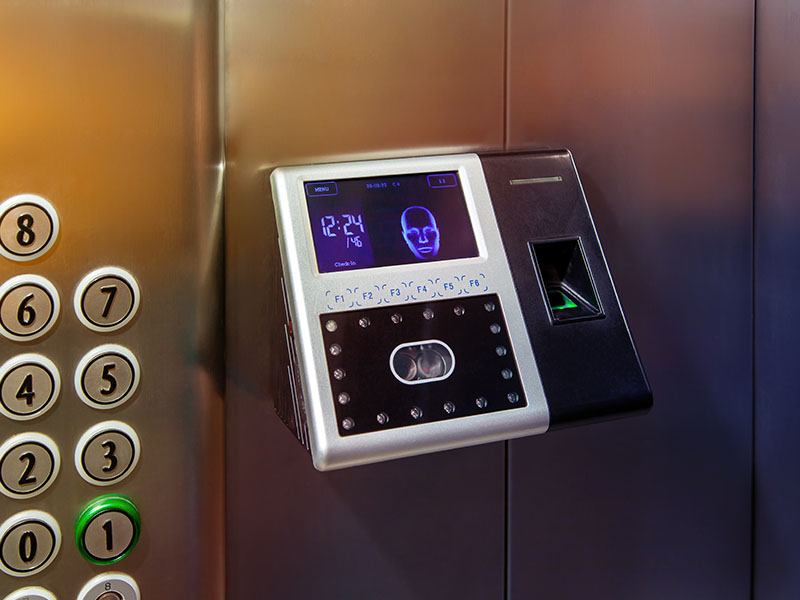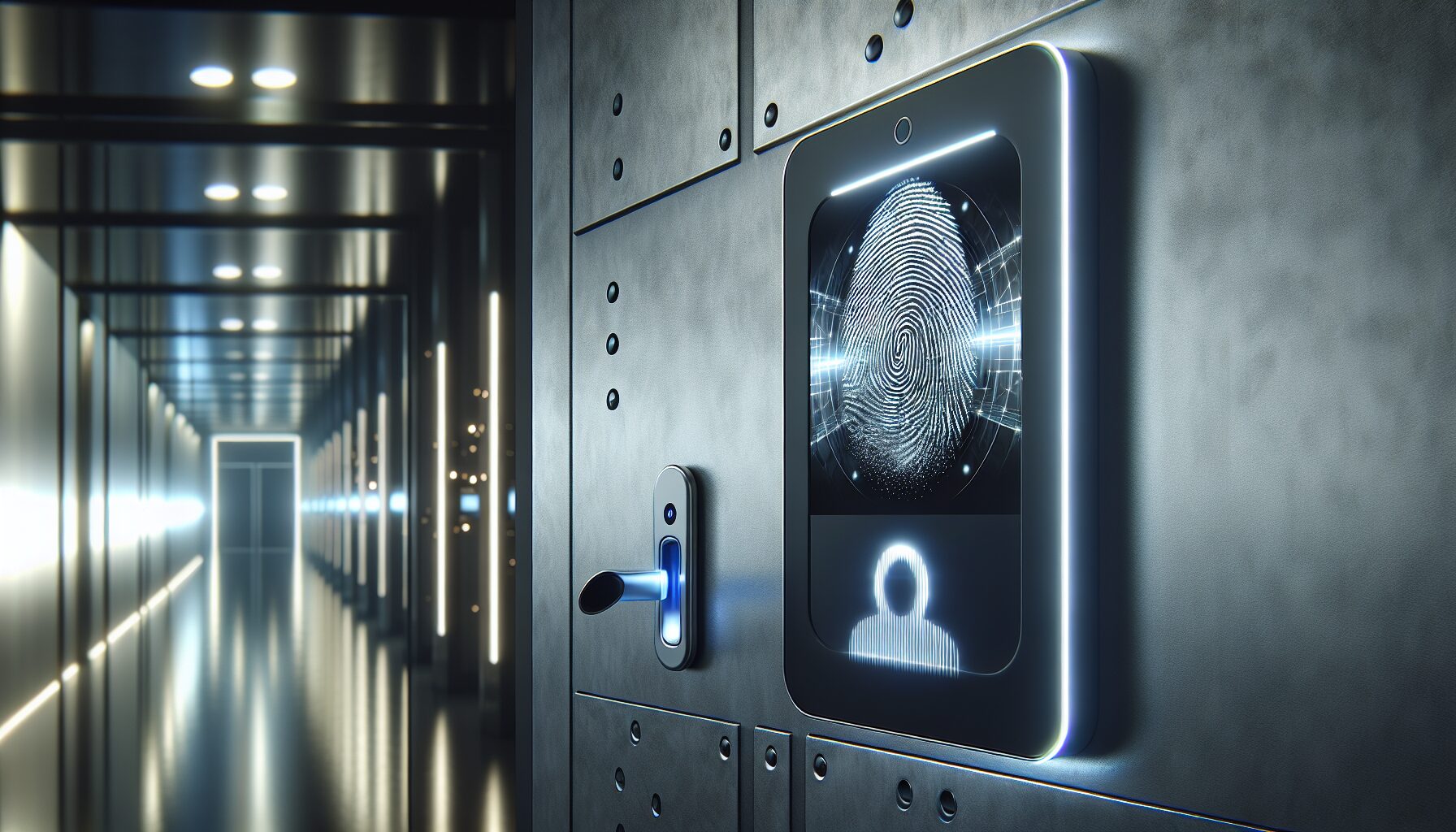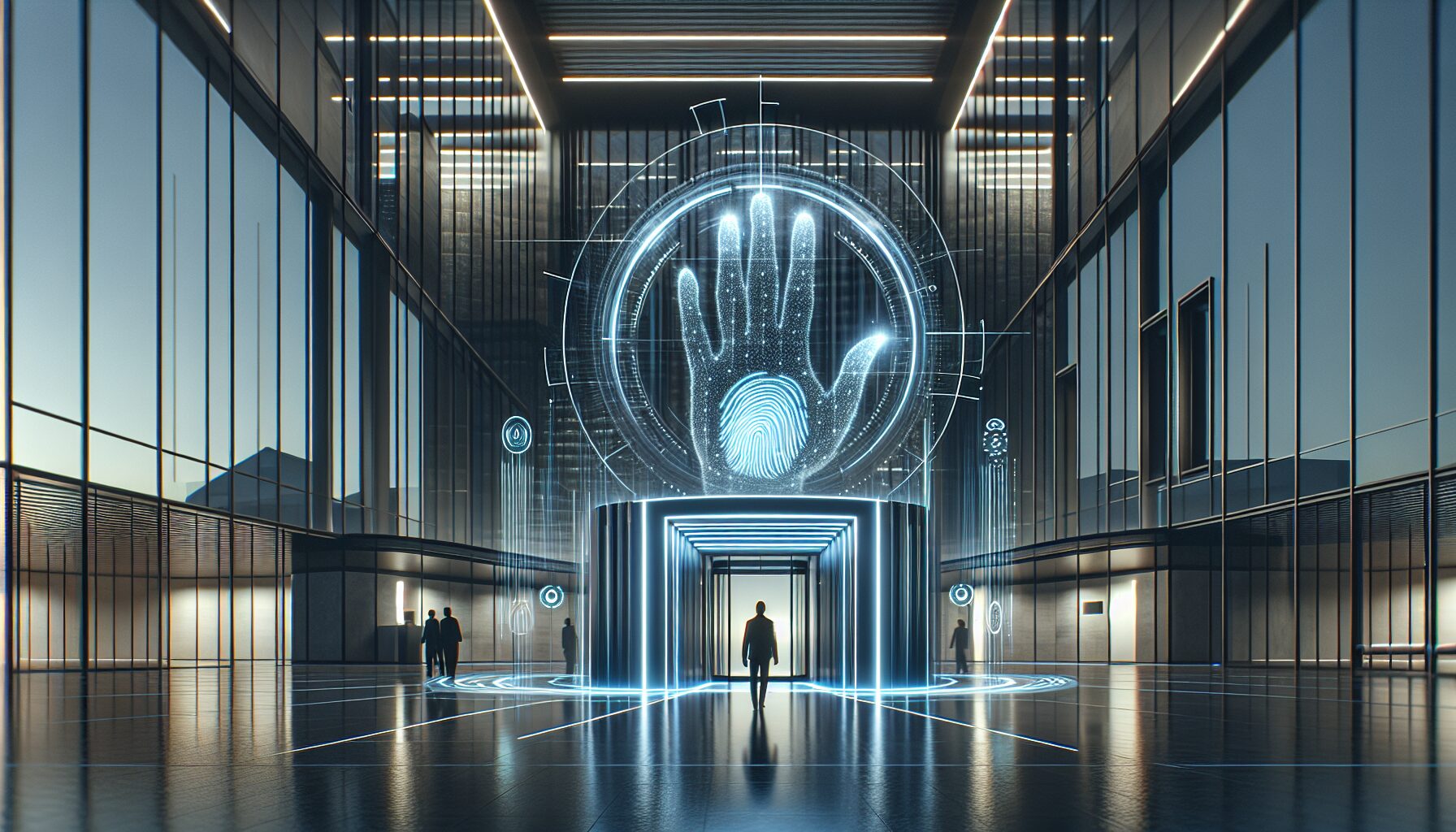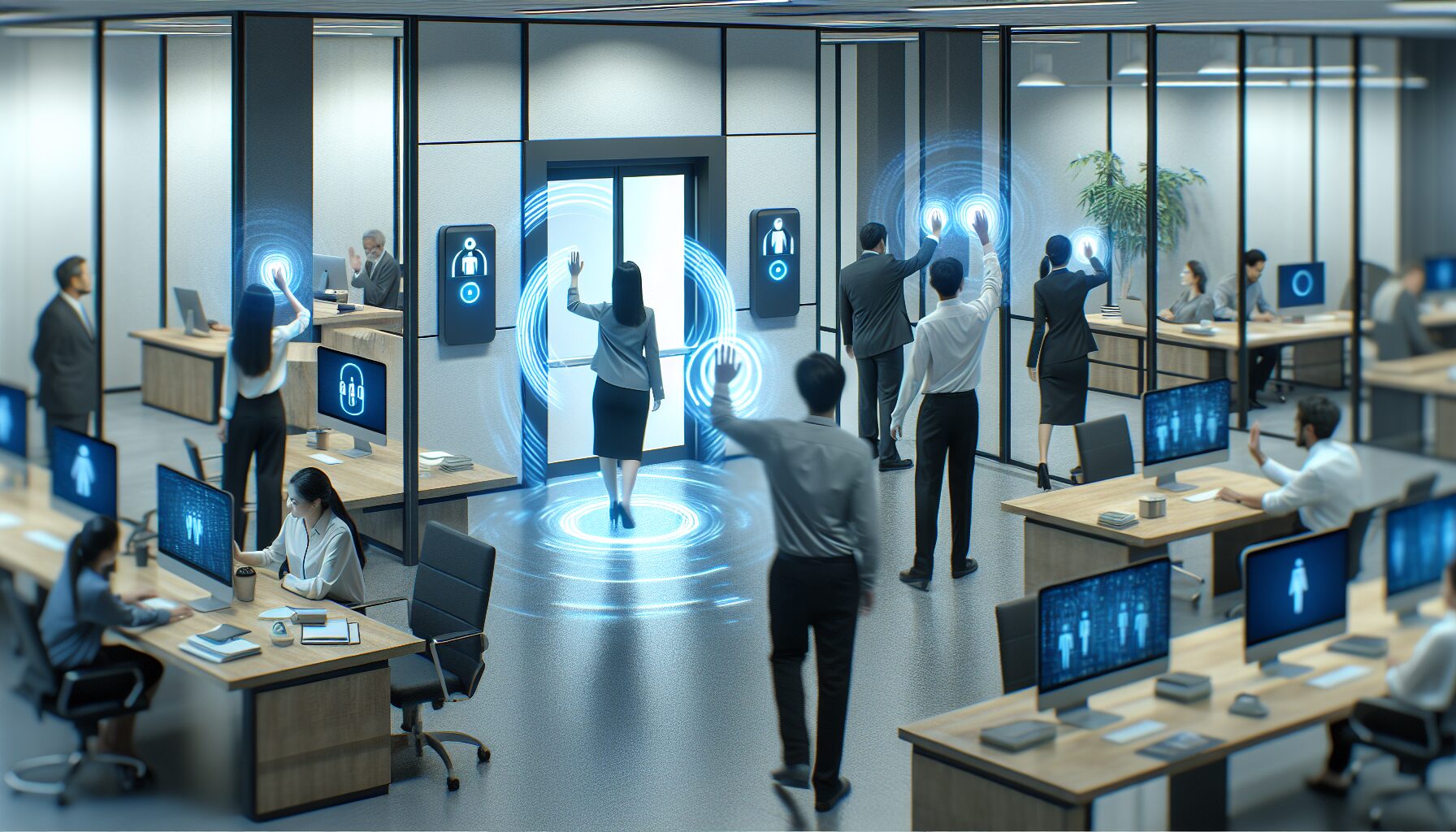
Securing your property in Tanzania? The best Security and access management systems for 2024 combine advanced technology with user convenience. From biometric verification to remote management, learn about state-of-the-art solutions that meet the evolving security demands in Tanzania, ensuring your assets are protected with efficiency and ease.
Access control systems have evolved from traditional mechanical locks to advanced electronic and biometric technologies, enhancing convenience and security by allowing authorization and authentication through various electronic credentials.
Key players in the access control market, such as Anviz Global and Suprema, offer integrated smart security ecosystems with biometric authentication and real-time surveillance capabilities, emphasizing user-friendly, scalable, and advanced security solutions.
Physical access control systems remain a crucial aspect of securing premises, but the integration of access control with other security measures and adopting cloud-based systems are vital for a comprehensive security strategy that accommodates modern cybersecurity and accessibility needs.

Any organization’s security strategy heavily leans on the concept of access control. Rooted in the practice of limiting entry to a property or a building to individuals with proper authorization, access control systems have come a long way from the traditional mechanical locks to the advanced electronic systems of today. The shift towards modern access control systems is not just a technological upgrade but a strategic move to fortify organizations against security challenges, thus providing a secure and healthy environment for both employees and visitors.
Upholding a secure internal environment and protecting against external threats heavily relies on access control models and policies, making access control important. Most access control systems are designed with a balance between security and convenience in mind, ensuring that authorized individuals can easily access the resources they need while keeping unauthorized users out. However, implementing effective access control isn’t without its challenges. From enforcing the need-to-know principle to preventing unauthorized access like tailgating, organizations are grappling with a myriad of issues. Mitigation strategies encompass a range of measures, including security awareness training, stringent access controls, and the utilization of access control software to manage and monitor these systems, all aiming to control access effectively.

In the realm of access control, technology has been a game-changer. The evolution from mechanical keys to smart solutions has marked a significant turning point in the way access control systems are designed and utilized. Today, Electronic Access Control (EAC) systems utilize computers and various access control credentials to replace mechanical keys. This new generation of systems offers a higher level of security and convenience, granting or denying access based on the credential presented.
The development of access control remediess has been significantly influenced by mobile technology, which has introduced convenient solutions like HID Mobile Access and the employee badge in Apple Wallet. These solutions integrate seamlessly with existing systems, offering a user-friendly experience and a higher level of convenience.
Furthermore, the advent of biometric technologies has played a significant role in advancing access control systems. Some examples of biometric technologies include:
Fingerprint recognition
Facial recognition
Iris recognition
Voice recognition
These technologies offer highly secure and personalized methods for verifying individuals’ identities, significantly improving both security and convenience.
The shift from physical keys to electronic credentials in access control systems has brought about a paradigm shift in the way organizations manage their protection. Electronic credentials offer several advantages over physical keys, including increased protection and reduced likelihood of credential duplication, making them an ideal choice for organizations looking to protect their assets and maintain a secure environment.
The enhancement of protection measures in access control systems greatly depends on electronic credentials. They perform several functions including identification authentication, authorization and encryption, reducing overall protection costs and providing secure credential management. The types of electronic credentials utilized in these systems are diverse and include RFID cards or fobs, PIN codes, biometrics such as fingerprints and facial recognition, key fobs, and proximity access cards.
The system functions by allowing cardholders to present a credential to a reader. If the cardholder has permission to enter a specific door, the system unlocks the door.
Mobile access control systems, in the context of today’s digital age, are reshaping our perception of security. By enabling secure and convenient access through smartphones and other mobile devices, these systems are enhancing user experience and improving overall protection.
The design of mobile access control systems prioritizes user convenience. By eliminating the need for physical keys or access cards, these systems allow users to utilize their smartphones or other mobile devices to gain access. The operation of these systems involves using smartphones as access credentials, with the mobile device serving as the key. This approach offers a more secure and adaptable method for managing access to buildings or properties.
Additionally, a comprehensive mobile-access control system should offer:
High-level protection with encryption
Remote access capabilities
Enterprise-grade security features
Improved usability features

Anviz Global makes a standout presence in the landscape of access control and security systems with its smart protection ecosystem. Offering solutions in smart surveillance, smart access control, and smart time attendance, Anviz Global’s ecosystem integrates advanced biometric technologies, multi-location monitoring, centralized management, and cloud data backup, among other features.
Utilizing biometric liveness detection, smart card, and mobile technologies, Anviz Global’s smart access control solution offers a solution that’s both user-friendly and highly secure. Moreover, Anviz’s smart time attendance solution offers businesses a range of benefits including time and cost savings, real-time business performance insights, and streamlined HR workflows, among others.
In addition, Anviz Global leverages deep-learning algorithms for real-time surveillance, providing more intelligent protection and quicker communication within their access control system.
Anviz’s cloud-based surveillance solution provides a new level of protection, offering:
Real-time views of facilities
Securely stored and accessible data remotely
High-definition cameras for enhanced image quality
A secure cloud platform for data protection
This advanced system ensures data protection and provides peace of mind for users.
Cloud-based surveillance contributes to improved protection by enabling remote access, scalability, cost-efficiency, automatic updates, and centralized management, among other benefits. To ensure a reliable and effective surveillance system, necessary components include HD video recordings, advanced features like night vision and two-way audio, and the capability to remotely store footage in the cloud.
Anviz safeguards the data in their cloud-based surveillance system through the use of advanced AI technology and a secure cloud platform that integrates access control and staff management features.
Simplifying access management is at the heart of Anviz’s smart access control solution. Incorporating features such as smart shift scheduling, biometric liveness detection, and compatibility with smart card and mobile technologies, it offers a comprehensive and intuitive solution for access control.
Anviz’s smart access control system streamlines the point of access by utilizing biometric liveness detection, smart card, and mobile technologies to guarantee convenient and dependable access control. The system is data-rich, integrating access control functions with features such as a burglar alarm and time attendance, offering a comprehensive solution for businesses and organizations.

Another name leading the world of access control solutions is that of Suprema. A global supplier of access control, time & attendance, and biometrics solutions, Suprema has brought several innovations to the security industry over the past few decades. Their advanced biometric technology offers significantly enhanced protection compared to traditional RF card-based systems, while also detecting environmental variations to bolster security measures.
Providing comprehensive reporting and audit trails, a range of management functionalities, and advanced capabilities for protection, safety, and compliance are Suprema’s advanced access control systems. Furthermore, Suprema’s access control remediess integrate seamlessly with existing systems or infrastructure, offering multi-layer biometrics, alarm systems, and advanced authentication for complex layers of critical infrastructure protection.
Suprema’s advanced biometric access control systems offer:
Cutting-edge security
Advanced biometric technology
Robust performance
Exceptional security
A leading bio-reader, RealScan-G, providing a high level of protection and convenience.
Suprema’s biometric technologies offer a heightened level of protection by incorporating authentication methods like fingerprint recognition, facial recognition, and palm vein recognition. These biometric features are unique to each individual and hence, are challenging to replicate or counterfeit. Additionally, Suprema’s advanced biometric access control systems prioritize user-friendliness, incorporating features such as retina and fingerprint scans, voice recognition, and cutting-edge facial recognition technology and touchless solutions.
These systems are not only reliable but have also been recognized for their safety and dependability, making them a trusted option for access control.
Suprema’s access control solutions are known for their seamless integration capabilities. They are designed to work harmoniously with a wide range of leading technology providers, including:
Video management systems
Intrusion detection systems
Time and attendance systems
Visitor management systems
This integration improves the overall security infrastructure.
Suprema’s access control solution is designed to enhance a comprehensive protection approach by integrating leading biometric technology, distributed system topology, and two-way CCTV integration, providing highly secure tangible access control solutions, particularly for data centers. It includes various management features to enhance protection and control, such as long-term non-access user management and user permissions management.

Even though digital access control systems are gaining traction, one cannot overlook the role of tangible access control systems in enhancing protection. These systems are responsible for:
Limiting entry to physical locations based on authorized individuals
Restricting access to permitted areas
Controlling access at specific times
Enhancing the overall physical security measures
Regulating physical entry to secure areas can be achieved through a variety of methods, including the presence of protection personnel, the use of mechanical mechanisms like locks and keys, or the implementation of advanced access control systems designed to permit entry only to authorized individuals. These systems utilize distinct credentials such as key cards, PIN codes, or biometrics to ascertain the identity of authorized individuals. Upon successful verification, these systems grant access; if the verification process is unsuccessful, access is refused.
However, traditional mechanical locks and keys pose several challenges in upholding secure environments, given their susceptibility to unauthorized duplication and the need for re-keying when compromised.
Managing access rights in sensitive areas can be achieved through customizing access control systems, which limit access to necessary personnel and grant temporary secure access to visitors. Technologies such as biometrics, RFID, near-field communication, and Bluetooth are utilized for these systems, offering a high level of protection due to their uniqueness to individuals.
Modern access control systems employ various authorization mechanisms, such as access control readers, to manage entry to sensitive areas, ensuring that only authorized individuals or entities can access certain areas or computing resources. Identity and access management plays a crucial role in this process. For visitors, temporary secure access can be granted through the integration of visitor management systems with the existing access controls. This allows for the granting of temporary access rights based on the visitor’s clearance level and purpose of visit, all while ensuring optimal protection measures are maintained.
Touchless access control solutions have gained prominence in the wake of the global pandemic. By minimizing contact with shared surfaces, these systems promote safety and health in the workplace.
Touchless access control solutions include:
Wireless credentials
Mobile apps
Cloud-based management software
Touchless entry devices
These systems operate by creating a contactless link between an individual’s credential and the access control system’s credential reader. This is achieved through natural movements, such as tapping or rotating a mobile device, or through biometric authentication methods, like facial recognition or fingerprint scanning.
Examples of successful implementation of touchless access control systems include:
Touchless access control via elevators
Touchless door access controls using mobile credential apps
Technologies such as wave-to-open door sensors, contactless fingerprint sensors, iris scanners, facial recognition, and wearables.
Network connectivity, in today’s interconnected world, plays a central role in enhancing protection systems. By enabling access to cloud-based resources and remote system data, network linkage offers enhanced cybersecurity, risk reduction, and improved protection against data loss.
Cloud-based resource management enhances protection systems by providing protection against a range of cyber threats such as DDoS attacks and offering improved access control. Furthermore, it enables easier access to Information, supports a wider range of applications, and facilitates efficient inter-departmental and external collaboration.
Remote access to system data contributes to the enhancement of protection measures by enabling the secure implementation of policies to protect enterprise resources, encryption of data to prevent unauthorized access, and the use of robust authentication methods to ensure the integrity and confidentiality of Information. However, these systems are susceptible to various risks, including encryption vulnerabilities, ransomware, DDoS attacks, insider threats, and IoT device vulnerabilities.
To mitigate these risks, it is advisable to employ current encryption technologies, utilize dependable anti-malware solutions, and actively manage insider access to prevent potential threats.
A revolution in the security industry has been brought about by the shift to cloud-based system assets. Offering increased flexibility, scalability, and remote access capabilities, cloud-based resources are a game-changer for modern access control systems.
Cloud-based system Assets provide:
Remote access capabilities including tunneling via VPN/IPsec or SSL
Remote desktop protocol (RDP)
Scalability
Cloud-based access control for managing access permissions and authentications.
By enabling access to cloud-based resources and remote system data, network linkage improves security systems. The advent of cloud technology has brought about a revolution in the security and access control industry by allowing for the remote management of access control systems, offering immediate visibility and control over the individuals entering and leaving a facility.
Creating a unified protection platform for businesses and organizations is a strategic move that involves integrating access control with other protection measures. Some of the security systems that can be integrated with access control systems include:
Intrusion
Video surveillance
HR databases
Badging
Visitor management systems
And others
Avigilon’s building access control software, for example, offers customizable features that enable organizations to establish connections with sensors and intelligence software, thereby automating emergency and threat responses. Furthermore, the advantages of open API architecture, such as that offered by Avigilon, include maximized interoperability across the entire organization.
A unified security platform combines access control with other security systems, such as video surveillance and intrusion detection, for a comprehensive approach to safety. The integration of these systems allows personnel to oversee and control both systems from a unified platform, streamlining operations for more efficient and effective security management and response procedures.
Furthermore, the integration of access control with intrusion detection systems offers a more comprehensive security solution for organizations. This combined approach can offer improved protection against unauthorized access and other security threats by promptly alerting and monitoring potential breaches in real-time.
Understanding specific business needs and evaluating available options is involved in navigating the selection of access control solutions. Some factors to consider include:
The size and complexity of the organization
The level of security required
The budget available
The scalability and flexibility of the system
The integration with other security systems
The choice between on-premise and cloud-based access control systems, for instance, largely depends on the specific requirements and resources of an organization.
Organizations can consult resources like the Avigilon Access Control Guide, which provides guidance on critical considerations for choosing secure and fitting access control systems tailored to specific requirements. Integration capabilities, such as those offered by Avigilon’s solutions designed with open API standards, enable seamless integration with a range of leading technology providers, thereby improving the overall security infrastructure.
A thorough understanding of business needs is required to choose the right access control solution. Customizing access control solutions to meet individual business requirements ensures that the security measures implemented are:
thorough
adhere to pertinent regulations and standards
in harmony with the organizational culture
in harmony with the potential risks that the business may encounter.
Company size and the nature of the industry also play a crucial role in determining the best access control solution. This can vary from basic keycard systems for small businesses to more advanced solutions with real-time monitoring and biometrics for larger organizations operating in high-security industries. Moreover, access control systems can assist businesses in adhering to regulations by prioritizing compliance and establishing the required safeguards to meet regulatory requirements.
In the ever-evolving world of access control systems, businesses and organizations need to stay abreast of the latest trends and technologies. From the shift from physical keys to electronic credentials, the advent of mobile and touchless access control, to the benefits of cloud-based resources and network connectivity, the landscape of access control systems is continuously evolving. By carefully evaluating their specific needs and exploring the innovative solutions offered by leading manufacturers like Anviz Global and Suprema, businesses can implement robust and efficient access control systems that not only enhance security but also improve the overall user experience.
A security access control system is a method used to manage and control who is allowed to enter a site or specific areas within a building, while preventing unauthorized access without obstructing authorized individuals. It includes various forms of user identification and authentication, such as passwords, biometric scans, and security tokens, to ensure secure access to premises and resources.
The three types of access control are discretionary access control (DAC), role-based access control (RBAC), and attribute-based access control (ABAC). Each type offers a different approach to managing access to resources.
Access control systems include security measures such as key locks, biometric systems, motion detectors, and others, which regulate access to restricted areas. These can be found in doors, fences, and other security systems.
The main difference between access control and security control is that access control pertains to authorizing entry to an area, while security control encompasses access control along with additional features like alarm systems or surveillance. Therefore, while access control is a component of security control, the latter includes a wider range of features.
Implementing robust protection and access control systems is crucial for fortifying organizations against security issues and vulnerabilities, thus increasing safety and providing a healthy environment for employees and visitors. It is essential for ensuring a secure and protected work environment.
